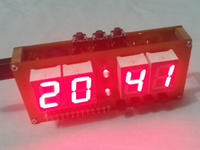Vaughn
Junior Member level 2
I am designing a digital clock using atmega8 without external RTC chip, In this project two power supply is being used one main power 5V and another 3V power from lithium battery, when there is main power available 7segment displays the time and when the main power gets disconnected 7segment is made turned off and MCU goes into sleep mode, draws power from lithium battery, so the my problem is I want to design a circuit which will be sending voltage 4.7V or above to MCU pin when there is main power available and the ground as soon as voltage drops below the 4.7V. How can I achieve this using a 4.7V zener and few resistors without transistors?

